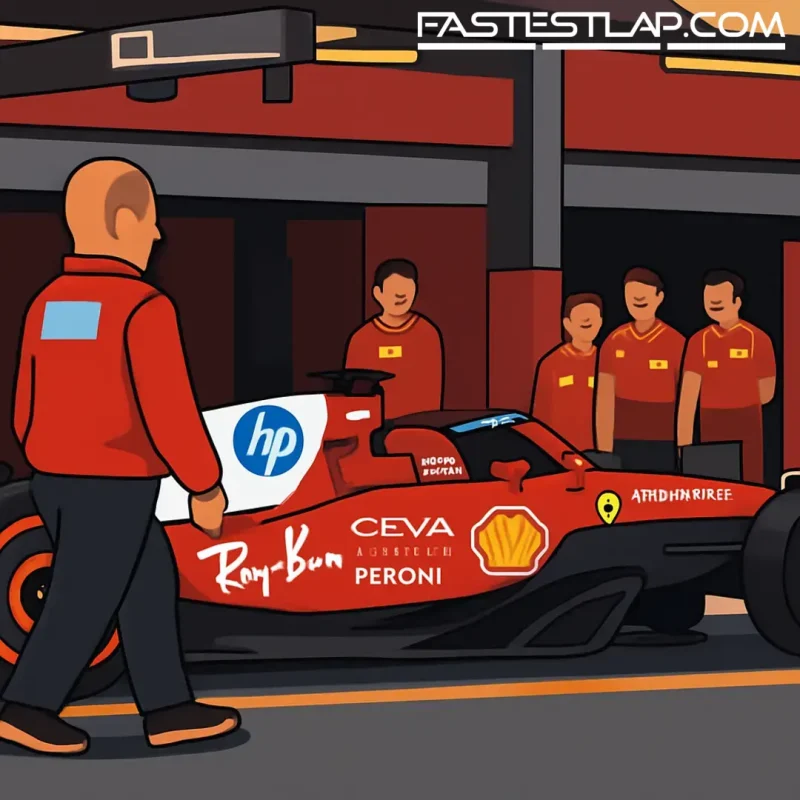Leclerc’s Baku pole bid ends in the Turn 15 tyres as chaotic Q3 ties red-flag record
Charles Leclerc had the pace to swing at pole in Baku. Instead, he met the cushions at Turn 15.
The Ferrari driver crashed out of Q3 with just under seven minutes left on the clock at the Azerbaijan Grand Prix, a tricky drizzle rolling in off the Caspian turning the narrow, downhill left-hander into a trapdoor. Leclerc, on his first push lap of the segment, slid straight on and buried the Ferrari nose-first in the tyre wall, blocking the road and detonating the fifth red flag of a stop-start qualifying.
If it felt endless, that’s because it was: the session matched the all-time F1 qualifying record for red flags, drawing level with São Paulo 2024 and Imola 2022. Q3 itself started more than 20 minutes behind schedule after a litany of earlier shunts, and the final act kept the marshals busy again.
Before Leclerc’s off, the tone was already skittish. A light but telling drizzle began in Q3’s opening minutes; Max Verstappen was straight on the radio about the drop in grip, and drivers tiptoed through sighting laps to feel out the street circuit’s changing mood. Carlos Sainz, Liam Lawson and Isack Hadjar managed to bank early times to form a provisional top three while others prepared their first flyers. Then Turn 15, as it so often does, took a vote.
Leclerc climbed out without issue, but the Ferrari was left with a battered nose and the session was halted for barrier checks and cleanup. Whether the rain crept in a touch faster than the out-laps suggested or the track simply bit back, the outcome was the same: a qualifying opportunity gone for a driver who’s usually razor-sharp around Baku’s walls.
The chaos started much earlier. Q1 and Q2 were punctuated by offs from Alex Albon, Nico Hülkenberg, Franco Colapinto and Ollie Bearman, each incident triggering red flags and a reset. It left the field disjointed and the tyre plans shredded, and by the time Q3 finally got going, everyone knew the window to deliver was narrow—and shrinking with the weather.
For Ferrari, it’s a bruising moment in a session that looked primed for a front-row fight. Leclerc’s low-fuel pace was right there, the car rotating nicely through the middle sector and hanging on over the bumps. But Baku is all angles and consequences; one misread and it’s a truck ride back to the garage.
Up and down the pit lane, engineers could be seen recalculating risk on the fly: how much to push with the surface going cool and slick; how quickly the wind would shift along the walls; whether to chase a banker or swing for it. The brave were rewarded—at least until the red flag wiped the slate clean again.
The bigger picture? A reminder—if anyone needed one—that Azerbaijan doesn’t do routine. It dishes out slipstream lotteries and razor-thin margins, then throws in a weather twist for good measure. When the grip goes, even the best feel mortal.
As for the record books, five stoppages in one qualifying ties the modern mark. It’s a stat that sounds absurd until you remember the venue: Baku’s combination of blind entries, unforgiving barriers and long, cooling straights makes managing tyres and brakes as tricky as threading the castle section. Add drizzle, and you’ve got a rolling hazard test.
Ferrari’s immediate task is simple but urgent: assess the damage and get Leclerc turned around for Sunday. The turnaround in Baku is never generous, and every change under parc fermé scrutiny matters. On a weekend where track position is king and the slipstream game can swing fortunes by tenths, starting further back can be grim—but not terminal. This is a circuit that offers both chaos and opportunity.
Leclerc’s crash will sting because the pace looked real and the timing—right when the weather blinked—felt decisive. But Baku has long memories and short tempers. Survive Saturday and you’ve still got Sunday to write a different story.




